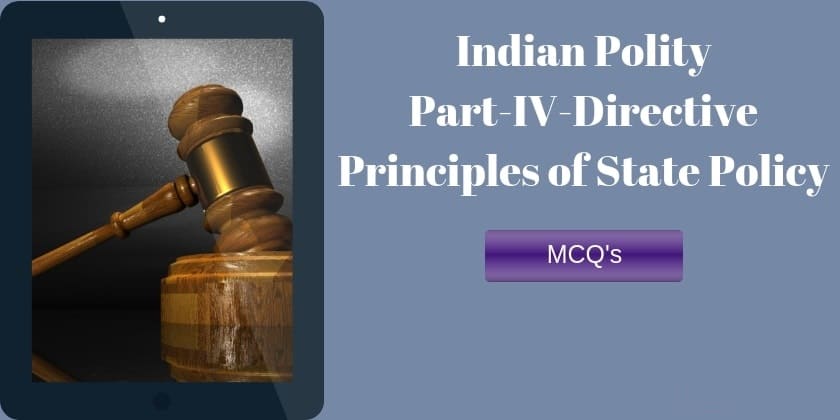31. ‘The directive principle of state policy is a cheque which is paid on Bank’s convenience’ who told it?
A. B.R. Ambedkar
B. K.M. Munshi
C. Rajendra Prasad
D. K. T. Seth
Click to show/hide
32. The directive principle of state policy are:?
A. Justicable
B. Non-Justicable
C. Only some of the provisions are justiciable
D. None of these
Click to show/hide
33. The purpose of the inclusion of the directive principle of state policy in the Indian constitution is to establish:
A. Political democracy
B. Social democracy
C. Gandhian democracy
D. Social and economic democracy
Click to show/hide
34. Which of the following are criticisms of Directive Principles of State Policy (DPSPs)?
1. Does not speak of the welfare state
2. Illogically Arranged
3. Conservative
4. Need more principles
a. 1, 2, 3
b. 1, 4
c. 2, 3
d. All of the above
Click to show/hide
35. Which of the following examples of the implementation of Directive Principles?
1) Planning Commission
2) Wildlife (Protection) Act, 1972
3) 73rd Amendment Act of 1992
4) Minimum Wages Act
a. 1, 2, 4
b. 1, 3
c. 2, 3, 4
d. All of the above
Click to show/hide
36. By which Amendment Act of the Constitution of India was the Directive Principles of the State Policy given precedence over the Fundamental Right wherever they come into conflict?
A. 40th
B. 42nd
C. 44th
D. 46th
Click to show/hide
37. Panchayati Raj System in India is laid down under
A. Fundamental Rights
B. Fundamental Duties
C. Directive Principles of State Policy
D. Election Commission Act
Click to show/hide
38. Which of the following is NOT included in the Directive Principles of State Policy?
A. Prohibition of liquor
B. Right to work
C. Equal wage for equal work
D. Right to information
Click to show/hide
39. Which one of the following Articles of the Directive Principles of State Policy deals with trie promotion of international peace and security ?
A. 41
B. 43A
C. 48A
D. 51
Click to show/hide
40. Which one of the following kinds of equality is not compatible with the liberal nation of equality?
A. Legal Equality
B. Political Equality
C. Social Equality
D. Economic Equality
Click to show/hide

